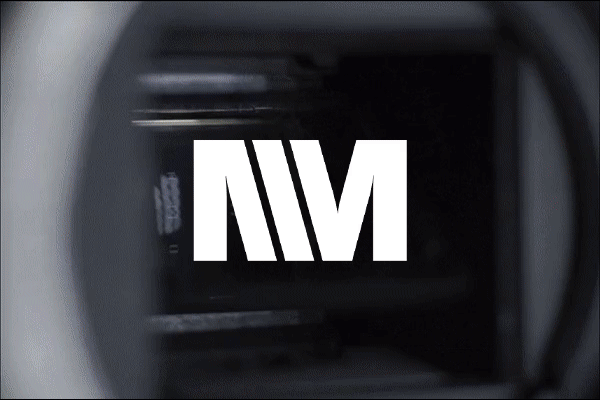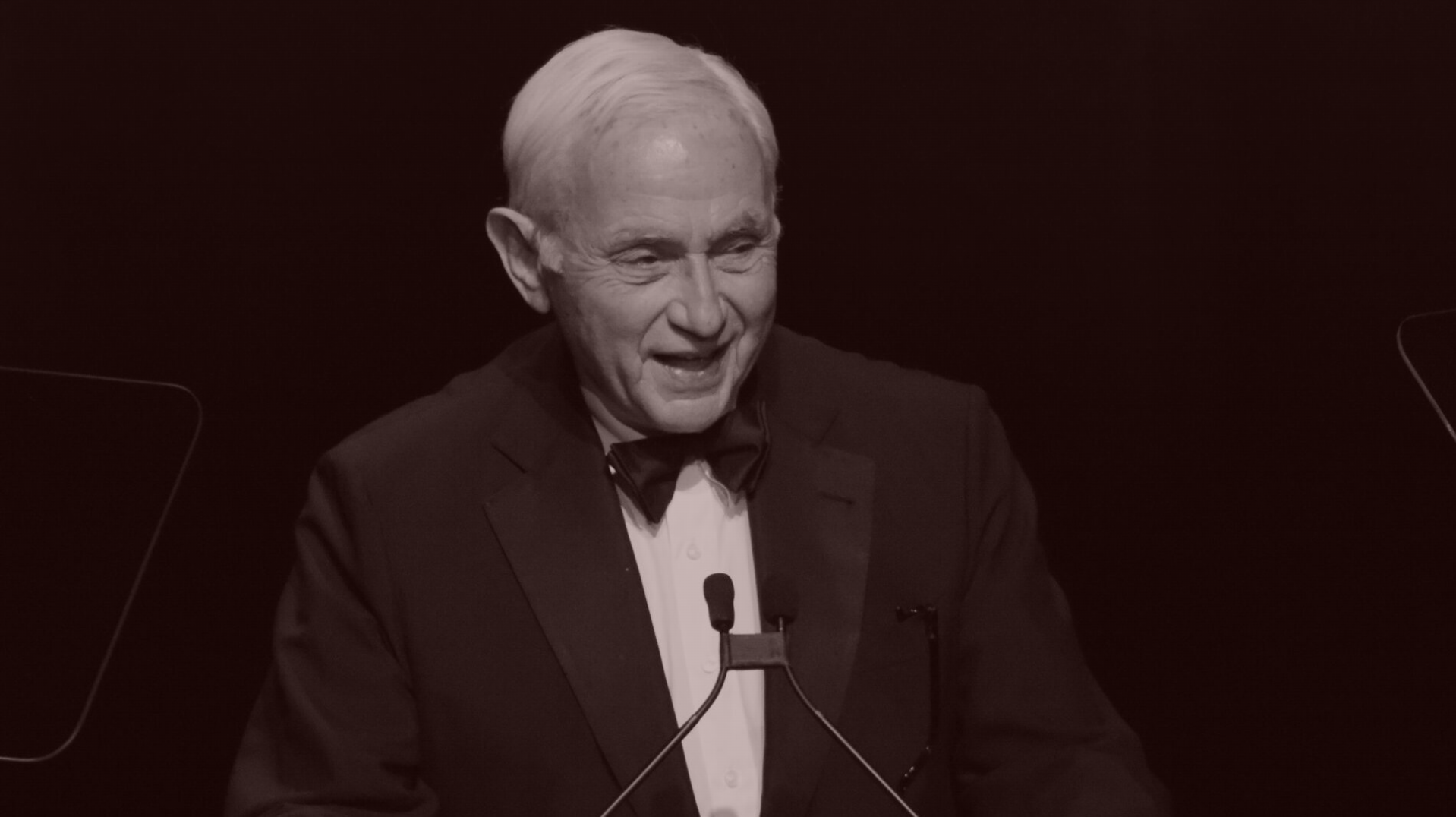 |
 |
|
Hi, welcome back to Line Sheet. Today, along with the requisite fodder up top (Kate Moss, Dior, System magazine), we’re bringing you an exclusive excerpt from our new book, Selling Sexy: Victoria’s Secret and the Unraveling of an American Icon. I chose this section because it tackled the trickiest topic that Chantal Fernandez and I had to report on: Jeffrey Epstein and his connection to the brand and, of course, its former owner, Les Wexner. More below.
I’m still in New York, writing this largely from the lobby of my hotel, happy that I stuck with my two-drink rule at last night’s no-notes-and-I-always-have-notes book party, hosted by Puck. I’m pretty sure this is the last media company still enthusiastically throwing parties for their writers, and this was as good as it gets.
So many people who have supported Chantal and me during this process (and really, our entire careers) showed up: family, friends, and sources, alike. A massive thanks to the team at Puck—especially Isabella Lichauco, Lia Marabella, and Alex Bigler (my queen), who made sure things were running smoothly until the last guest exited. And, of course, to Louise Johnson, our activations and experiences mastermind, for making sure it felt exactly right—and especially since she is getting married this week. I care as much about food as I do about fashion, so throwing it in the backyard of Borgo, the new restaurant from Andrew Tarlow & Co., was especially satisfying.
Those of you who were there last night might have met Liz Gough, our chief operating officer, and one of the biggest reasons I love working at Puck so much. (She’s also great at selling the product, and if you want to give us money, feel free to contact us at Liz@puck.news.) I’ll be forever grateful to Liz and Jon Kelly for being cool with me taking a break between my old job and this one to finish a big chunk of work on the book. (Jon’s always talking about it being a long game, and I guess in this case it wasn’t that long.)
When I finally set out to write my first column at Puck, several months later, I feared that the transition to the new gig would be challenging as I simultaneously managed the final stages of Selling Sexy. I’m not going to say it was simple, but Jon and his team—at the time, just Ben Landy and Danny Karel—made it easier than I could ever imagine. They are the most masterful, respectful editors—I often wake up in the morning on the West Coast and find that they have already perfected the copy I filed the night before, ready to go for the day’s send before the day has even started. We all know there’s an editing crisis in the industry, but not at Puck.
🚨🚨 Programming note: Tomorrow on Fashion People, Chantal joins me to talk process—why we decided to write this book together, and how we did it. We also discuss why Chantal once volunteered to be Graydon Carter’s second assistant. (Does someone have a PDF of his memoir that they can send me?) Subscribe here and here.
Mentioned in this issue: Lex Wexner, Victoria’s Secret, Jeffrey Epstein, Calvin Klein, Sarah Crichton, Kate Moss, Dior, Emmanuelle Alt, Women’s Wear Daily, Bear Stearns, Bath & Body Works, Alfred Taubman, Abercrombie & Fitch, Jonathan Anderson, Sotheby’s, Mike Jeffries, and many more…
|
|
A MESSAGE FROM OUR SPONSOR
|
 |
| MMGNET is fashion’s newest go-to industry resource, designed to support the wider fashion industry and connect our diverse communities, products, services, and resources more seamlessly year-round and in more ways than ever.
MMGNET connects ideas, concepts, minds, and people to empower new relationships that redefine our industry. And we do it all with purpose: to create a thriving industry ecosystem.
DISCOVER MMGNET
|
|
|
| Three Things You Should Know… |
|
- On the subject of Victoria’s Secret: I hear that Kate Moss is walking the fashion show on Tuesday, October 15. Makes sense, given that high-fashion-friendly Emmanuelle Alt is styling. They also need to make as many social media-ready moments as possible on Tuesday, and a runway appearance by Moss still does the trick in that department.
You’re gonna laugh, but there’s also a thread to pull here connected to body diversity. Kate Moss modeled for competitor Calvin Klein in the ’90s, and was closely associated with the waif look that Victoria’s Secret bristled against during that period (i.e., no boobs). The Victoria’s Secret standard of beauty may have been unrealistic, but it required the models to look “healthy” (not fat, but not too skinny either). Anyway, I’m looking forward to watching the livestream on Tuesday. You may have also seen that Joseph Altuzarra is designing a collection for the brand as they move further back into clothing. (My understanding is that Altuzarra and Alt were recruited separately, one long before the other.) One thing to note is that Altuzarra’s gig—a “designer in residence” situation—was the vision of Greg Unis, who was fired when C.E.O. Hillary Super joined in September.
- Can you tell I’m exhausted by the designer–change-up rumor mill?: We are all so over it. Obviously, there are things happening with Jonathan Anderson—that I know for sure, and will keep you updated as the story develops. One interstitial note, given that there is so much speculation that he might be joining Dior: Yesterday, I was invited on Instagram to the brand’s broadcast channel, Dior Together, and honestly I thought it might be their branded way of announcing that they had hired a new designer. It wasn’t. Not yet.
- System down: Did you see the news that System magazine’s remaining founders—Elizabeth von Guttman, Thomas Lenthal, and Jonathan Wingfield—are out? Alexia Niedzielski, the other one, left a while back. The magazine, which the foursome founded in 2013, aimed to cover the fashion system with an atypical intellect and depth, all while using their insider access to the best photographers to make it look really good. (Here’s a fun item on them by my guy Eric Wilson, from way back then.) Anyway, the magazine was bought in 2020, and it seems like the new owner, Mike Obenson, and the co-founders perhaps do not see eye to eye. (Von Guttman, Lenthal, and Wingfield plan to start something new next year.) If you want me to go further on this, you gotta email, call, WhatsApp, etcetera.
|
|
|
| ✍️ One note on tonight’s main event, before we get started: When Chantal and I set out to write Selling Sexy, we were clear to potential publishers that we weren’t interested in making it all about Epstein and Wexner’s relationship, even though that would have probably yielded a much larger advance. Our editor, the inimitable Sarah Crichton, got it, and the book we pitched to her is essentially the book we wrote.
That said, while we obviously had to address the Epstein elephant, we felt that weaving him throughout the book would feel false: He wasn’t involved in the day-to-day operation of Victoria’s Secret, and most of the executives we interviewed for the book had never even met him. (Some of them didn’t remember he was involved until he was arrested in 2019.) And yet, Epstein’s rise and fall almost perfectly paralleled Victoria’s Secret’s trajectory. We delve into his relationship with Wexner in the excerpt below.
|
 |
| Victoria’s Secret Epstein Affair |
| How did the convicted sex trafficker become a main character in the life of reclusive retail billionaire Les Wexner? In this exclusive excerpt from ‘Selling Sexy: Victoria’s Secret and the Unraveling of an American Icon,’ a look at how the Limited chairman allowed Jeffrey Epstein to insinuate himself into Wexner’s empire. |
|
|
|
| Les Wexner met Jeffrey Epstein in the mid-1980s. Back then, Wexner was a newly minted billionaire, still living in Columbus after adding Victoria’s Secret to his growing retail empire, Limited Brands, but spending more of his time in New York City. He’d recently bought the department store Henri Bendel and was making inroads with the city’s high-society crowd. But he was far from a social butterfly. If he appeared in the pages of Women’s Wear Daily, it was because of a development in his business. He rarely graced the pages of the paper’s “Eye” section, which documented the city’s latest fetes. Wexner needed an entrée into society, someone to connect him with the right people and protect him from the wrong ones.
Epstein’s background was unconventional for a money manager. He was born to working-class parents in Coney Island. He didn’t have a college degree, which was unusual but not unheard in finance at the time. His résumé amounted to little more than a less-than-two-year stint as a physics and math teacher at Dalton and a few years working as a stockbroker at Bear Stearns. But Epstein proved himself to be a good salesman and was promoted to limited partner, one level below full partner. He was known for his expertise in tax avoidance, catnip for wealthy clients. Epstein left the bank in 1981, for reasons that have remained murky. Some sources said he was pushed out for alleged infractions, but Epstein said he left of his own accord. And even though Epstein had likely been pushed out of Bear Stearns, C.E.O. Ace Greenberg and his deputy Jimmy Cayne still vouched for him. Wexner believed he could trust Epstein. And he needed someone a bit unconventional. He needed a hatchet man.
|
|
A MESSAGE FROM OUR SPONSOR
|
 |
| At MMGNET, we harness our global reach and decades of experience to deliver actionable insights and inspiration. Through world-class fashion industry events and year-round opportunities for connection, we foster collaboration and innovation. As responsible stewards, we champion sustainability and equity with meaningful initiatives that drive positive change. By serving a diverse range of stakeholders, we make MMGNET more than the sum of its parts, creating lasting impact across the fashion industry.
LEARN MORE
|
|
|
| While Wexner could be ruthless in his business, he disliked confrontation. Over the years, he attached himself to deputies who were willing to do his dirty work—to say the things to his employees or partners or lawyers that he would rather not say himself.
Early in his working relationship with Wexner, Epstein proved himself a tough operator. One of Epstein’s friends recalled him saying that Wexner originally hired him when he suspected someone at The Limited was stealing company funds, according to a report by Mother Jones. Wexner asked Epstein to come to Ohio and take a careful look at the accounts and find the culprit—an ideal task for Epstein, who knew how to think like a swindler.
In 1991, Wexner made an unusual decision with lasting implications: He granted Epstein power of attorney, with the legal authority to act on Wexner’s behalf—to cut deals and manage relationships, but also to invest, and spend, his money. Power of attorney is usually granted to close, trusted family members, friends, and in some cases lawyers. For Wexner, who at the time was in his early fifties and by all indications in sound health, Epstein was an odd choice. The two hadn’t known each other for long, and Epstein was not connected to any of Wexner’s other advisers. Though Epstein’s résumé was thin, Wexner trusted him with not only investments but also personal projects. Epstein hired and fired personal employees, including nannies for the Wexner children, who arrived years later. Epstein joined planning meetings about the suburb, New Albany, that Wexner developed in Central Ohio, and helped Wexner commission a new, larger iteration of his yacht Limitless, overseeing its construction with ship captain Craig Tafoya in Germany in the mid-1990s. “I saw him as the money guy,” said Craig’s wife Mary Tafoya, who worked as a stewardess on the Limitless. (Craig died in 2021.) Tafoya saw Epstein aboard the yacht only twice: He was prone to extreme seasickness.
|
|
|
| Shy and at times reclusive, Wexner was an unusual fit with the charming, handsome partier Epstein. But it was clear to those around Wexner that Epstein had a hold on him. “It just makes no sense why [Wexner] did any of that, to allow Epstein to manage all his money. It was baffling,” said one of the company’s former top executives. “Everyone thought Les was such a retail genius, then he did this. It was so bizarre.”
It wasn’t like Wexner to trust someone so easily, quickly, and with such conviction. His mother, Bella Wexner, was among those with suspicions about Epstein’s motives. So was Alfred Taubman, the Detroit real estate developer, onetime Sotheby’s owner, and Wexner’s close friend. He asked Wexner directly why he gave Epstein such expansive powers to operate on his behalf. Taubman later recounted the exchange to the journalist Edward Jay Epstein (no relation). “If you knew how much money he has made me, you wouldn’t ask,” Wexner responded.
Epstein settled into a consigliere-type role with Wexner. Epstein’s rising influence in Wexner’s life coincided with his marriage to Abigail in 1993 and the widening gulf in his relationship with his mother, Bella. Shortly before the wedding, Wexner replaced his mother, then in her mid-eighties, as one of the trustees of their family charitable organization, the Wexner Foundation, while she recovered from an illness. Epstein took her spot. When Bella tried to return to her trustee role a few years later, Wexner and Epstein blocked her. “If my client needs protecting—sometimes even from his own family—then it’s often better that people hate me, not the client,” Epstein later told Vanity Fair.
|
|
|
| But most executives said they were unaware of Epstein’s involvement in the Limited Brands’ day-to-day operations. Key people involved with the catalog and models said they had never heard of him before his arrest in 2019. He did show up for the fashion show in the early years, often sitting next to Wexner or his wife, Abigail, and often with his girlfriend, Ghislaine Maxwell.
Epstein did interact with executives on Limited Brands’ corporate finance and investor relations teams. (One of those executives recalled Epstein as nasty and dismissive in his dealing with executives, especially with women. “He was a very active force,” said the executive.) In particular, Epstein was said to be deeply involved in a series of complicated financial maneuvers in the second half of the 1990s. As his women’s apparel brands struggled, Wexner opted to spin out several divisions from Limited Brands. One was Abercrombie & Fitch, which became its own entity in 1996. The other was a combination of Victoria’s Secret and Bath & Body Works, which became Intimate Brands, Inc., in 1998. Epstein drove the strategy behind both deals, according to former Limited Brands executives. The spinouts were billed as a boon for Wall Street, freeing the new divisions—and their stock prices—from the struggles of the Limited and Express.
Wexner had other plans for Abercrombie. In 1997, he summoned every Limited Brands C-suite executive to his home in Columbus to announce that the Limited Brands would divest fully from the new entity. The decision bewildered many of his executives. The provocative teen brand was an impressive, highly profitable retail success story thanks to Mike Jeffries, its dogmatic chief executive. Its revenue had nearly tripled between 1994 and 1996 to $335 million. But in 1998, two years after Abercrombie went public, Limited Brands sold its majority stake in the brand on the public market. The sale was meant to be tax-free to shareholders, allowing them to swap Abercrombie & Fitch stock for Limited stock, and vice versa.
Some executives speculated that Epstein had manipulated the stock sale to Wexner’s benefit and to the detriment of others. Rita Trevino Flynn, the head of communications at Limited Brands in the 1990s, was one of those executives, according to a colleague. She resigned shortly after the transaction. (Flynn declined to comment about the deal.) Other senior executives close to the deal denied any wrongdoing and said that divesting from Abercrombie was a practical decision with upside for shareholders. The transaction raised no red flags for outsiders or the business press at the time.
Meanwhile, Epstein’s life only grew more extravagant, thanks to Wexner. In December 2007, after more than sixteen years of close partnership, Wexner quietly revoked Epstein’s power of attorney. It was also in 2007 when Wexner later said he first heard about the allegations against Epstein in Florida, according to a letter he wrote to his foundation in 2019. Wexner said Epstein denied any wrongdoing, but Wexner still decided Epstein “should step back from the management of our personal finances.” In the fall of 2007, as he was breaking ties with Epstein, Wexner said he discovered that Epstein had stolen “vast sums of money” from him and his family. He never disclosed the total number. “This was, frankly, a tremendous shock, even though it clearly pales in comparison to the unthinkable allegations against him now,” Wexner wrote, adding that Epstein returned part of the stolen money—$46 million—in 2008. The questions, the media attention—much of it led back to Wexner. Reporters pieced together Epstein’s sketchy history. Victims like the model Alicia Arden came forward with their stories. The timing couldn’t have been worse for Wexner. Victoria’s Secret’s profits were plummeting, and an activist investor was calling for him to step down as C.E.O. of Limited Brands.
Excerpted from ‘SELLING SEXY: Victoria’s Secret and the Unraveling of an American Icon’ by Lauren Sherman and Chantal Fernandez. Published by Henry Holt and Company. Copyright © 2024 by Lauren Sherman and Chantal Fernandez. All rights reserved.
|
|
|
| Shira Suveyke Snyder is the new C.E.O. of Proenza Schouler, replacing Kay Hong as I let you know would happen a couple weeks back. She’s great! [Inbox]
The Arnaults are buying part of Paris FC, a “second-tier” football club, according to sources. [Reuters]
Moncler Genius, the pretty-genius marketing drip feed orchestrated by Remo Ruffini, is back with a new roster of collaborators, including Edward Enninful, Donald Glover, A$AP Rocky, and the Meiers (of Jil Sander fame). Ruffini talked to our boy Tim Blanks about it all, including the “City of Genius” Moncler is constructing in Shanghai, where each of them will build their own house. [BoF]
My husband wrote a big thing on how to save Starbucks; it’s really great and there are a lot of lessons here for anyone who operates retail. [The New Consumer]
Bluestar Alliance, the company that now owns Off-White, relaunched Limited Too, the tween offshoot of The Limited (founded by none other than Les Wexner), at Kohl’s this past summer. Now the company is making adult sizes, spurred by Millennial demand. One of the dumber things I’ve ever heard. [After School and The Cut]
This review is far too nice lol. [NYT]
|
|
|
| And finally… Let’s hear it for the return of sheer tights!
Until Monday,
Lauren
|
|
|
|
| FOUR STORIES WE’RE TALKING ABOUT |
 |
|
 |
|
 |
| Estée Succession |
| Revealing the E.L.C. insider in the C.E.O. catbird seat. |
| RACHEL STRUGATZ |
|
 |
|
|
|
|
|
 |
|
|
|
Need help? Review our FAQs
page or contact
us for assistance. For brand partnerships, email ads@puck.news.
|
|
You received this email because you signed up to receive emails from Puck, or as part of your Puck account associated with . To stop receiving this newsletter and/or manage all your email preferences, click here.
|
|
Puck is published by Heat Media LLC. 227 W 17th St New York, NY 10011.
|
|
|
|











